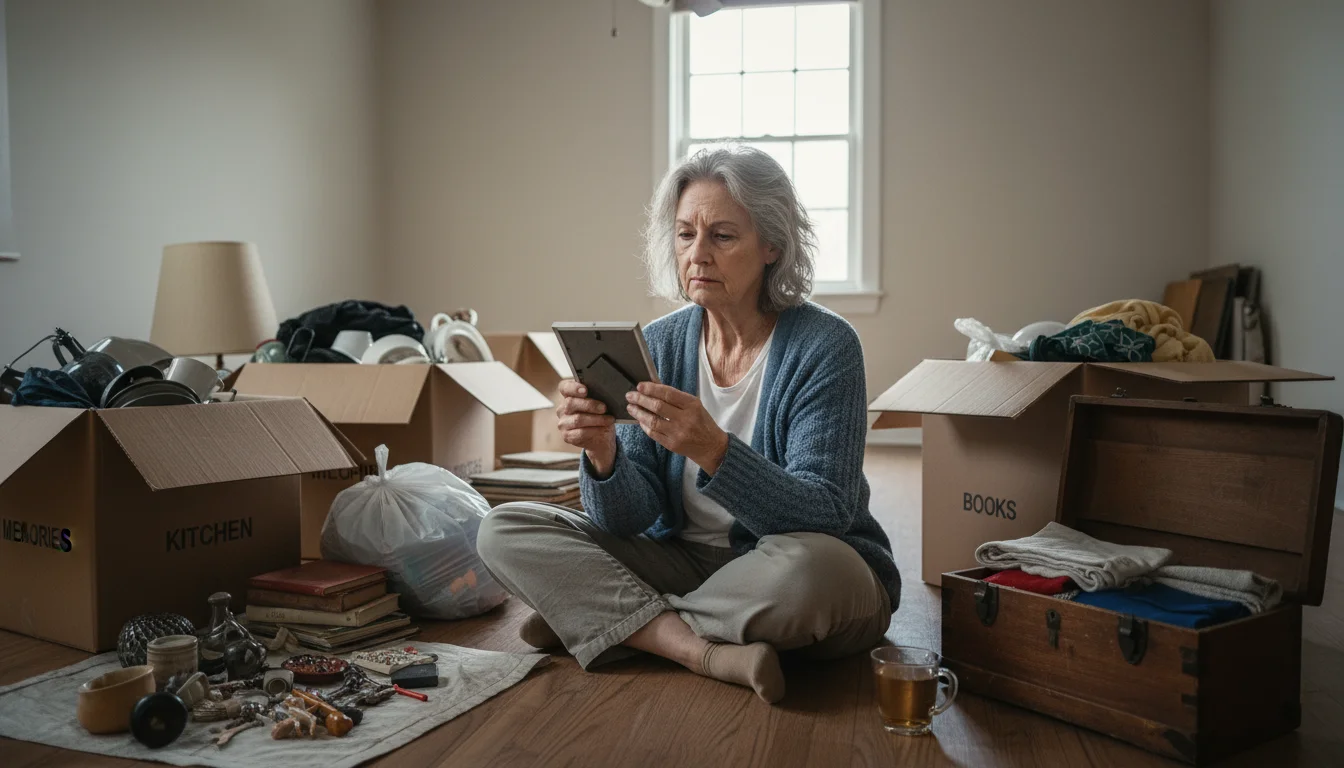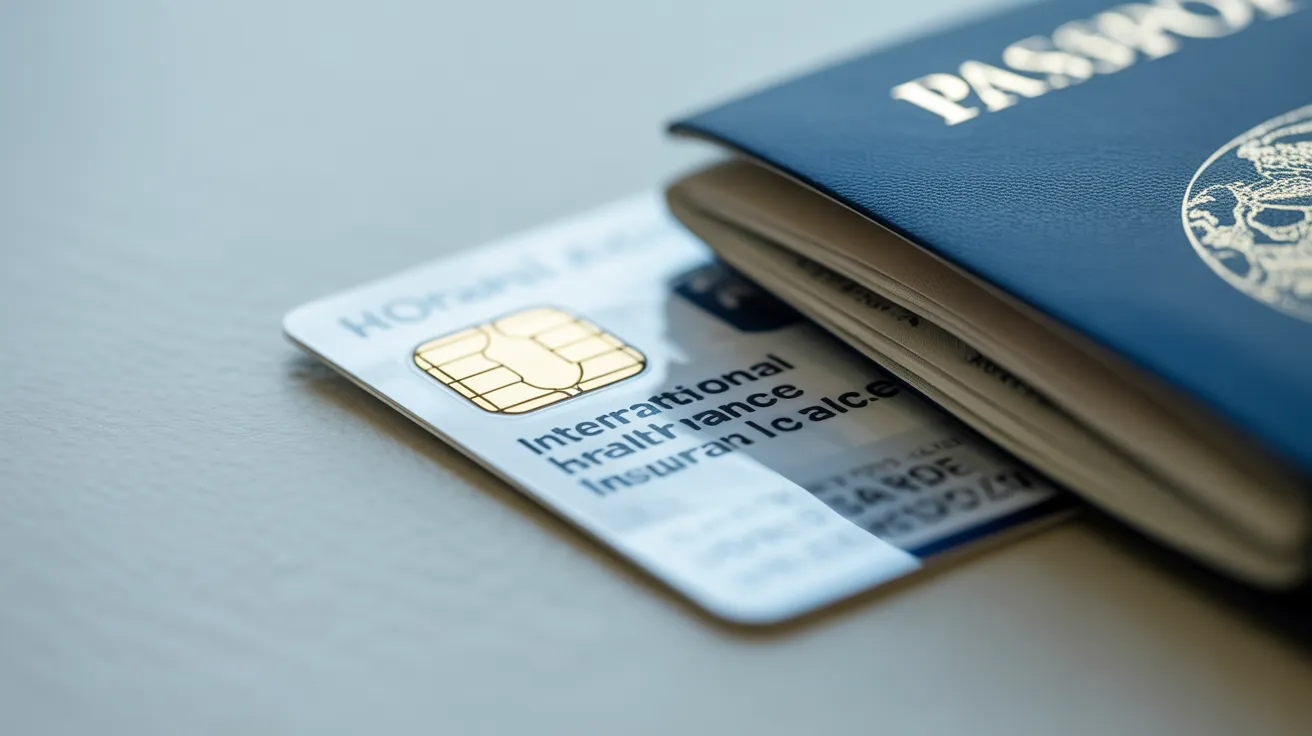

Introduction: Embracing a Global Retirement Journey
Have you ever closed your eyes and pictured your perfect retirement? For many of us, that vision extends beyond our own backyard. It might be the image of sipping coffee at a Parisian café, feeling the warm Mediterranean sun on your skin in a small Spanish village, or exploring the ancient ruins of Mexico. The dream of retiring abroad—of starting a new adventure in a different corner of the world—is a powerful one. It’s a chance to reinvent yourself, embrace a new culture, and make your retirement savings go further than you ever thought possible.
This isn’t just a fantasy reserved for the ultra-wealthy or the exceptionally brave. Today, more American seniors are making this dream a reality than ever before. This kind of major life change is the ultimate exercise in lifestyle planning. It’s about consciously designing a future that excites you, challenges you, and fills your days with purpose and joy. Making the move overseas requires careful thought and preparation, but the rewards can be immeasurable. It’s a bold step, yes, but one that can lead to the most vibrant and fulfilling chapter of your life.
This guide is designed to walk you through that process, step-by-step. We’ll break down the big decisions into manageable pieces, from choosing your ideal destination to handling the practical logistics of an international move. Think of this as your roadmap to a successful expat retirement, filled with practical advice and encouragement to help you turn your daydreams into a detailed plan.

Finding Your Path: Exploring Your Ideal Expat Destination
The first and most exciting step is figuring out where you want to go. The world is a vast and wonderful place, and your perfect spot is out there waiting. But with so many options, how do you narrow it down? The key is to look inward first and define what you truly want from your retirement lifestyle. Let’s explore the major factors to consider.

What’s Your Ideal Climate and Environment?
This is often the easiest place to start. Are you tired of shoveling snow and dreaming of year-round sunshine? Or do you prefer the distinct beauty of four seasons? Consider whether you see yourself in a bustling city, a quiet coastal town, a rustic mountain village, or a lush tropical paradise. Make a list of your must-haves. Do you need to be near the ocean? Do you want hiking trails right outside your door? Your daily environment will shape your experience more than almost anything else.
Popular Choices:
- For Sun Worshippers: Mexico, Costa Rica, Portugal, Spain, and parts of Southeast Asia like Thailand.
- For Four-Season Charm: France, Italy, and Germany offer distinct seasons with rich cultural histories.
- For City Lovers: Lisbon, London, and Mexico City are vibrant hubs with world-class amenities.

Cost of Living: Making Your Money Work for You
One of the biggest draws of an expat retirement is the potential for a lower cost of living. Your Social Security checks and retirement savings can stretch significantly further in many countries. This isn’t just about saving money; it’s about affording a higher quality of life. It might mean dining out more often, hiring help for housekeeping or gardening, or having a travel budget to explore your new continent.
Research is crucial here. Websites that compare the cost of living between cities are invaluable tools. Look at specific expenses: rent or property prices, groceries, utilities, transportation, and especially healthcare. A country that seems cheap on the surface might have hidden costs, so dig deep.

Healthcare: A Top Priority
As we get older, access to quality, affordable healthcare becomes a non-negotiable part of our lifestyle planning. This is perhaps the most critical research you will do. First, a vital fact: Medicare does not cover you outside of the United States. You will need a plan for health coverage in your new country.
Many countries with large expat communities have excellent healthcare systems, often at a fraction of the U.S. cost. You’ll need to investigate several things:
- Public vs. Private: Does the country have a public healthcare system you can pay into as a resident? What is the quality like? Most expats also opt for private health insurance for more comprehensive coverage and shorter wait times.
- Quality of Care: Are there modern hospitals and English-speaking doctors nearby? For specialized medical needs, ensure the local facilities can meet them.
- Insurance Costs: Get quotes for international health insurance plans. The cost will vary based on your age, health, and the level of coverage you choose.

Visa and Residency Requirements
You can’t just pack your bags and move. Every country has its own immigration laws. This part of the senior relocation process can feel daunting, but it’s entirely manageable with patience. Many countries are actively welcoming retirees and offer specific “retirement visas.”
Typically, to qualify for a retirement visa, you’ll need to prove you have a steady, recurring income (like a pension or Social Security) that meets a certain monthly threshold. You’ll also need to provide a lot of paperwork, which might include a background check, proof of health insurance, and a valid passport. It’s often wise to hire an immigration lawyer or a relocation specialist in your target country to help navigate the bureaucracy.

Culture, Language, and Community
Finally, think about the day-to-day experience. How important is it for you to be in a country where English is widely spoken? Are you excited by the challenge of learning a new language? Consider the local culture—the pace of life, the food, the social customs. The best way to gauge this is to visit. Spend at least a few weeks, or even a few months, in your top-choice locations. Live like a local, not a tourist. Go to the grocery store, visit the library, and strike up conversations. See if it truly feels like a place you could call home.

Tips for Getting Started and Making Connections
Once you’ve narrowed down your list of potential destinations, it’s time to move from dreaming to doing. This is where your detailed lifestyle planning kicks into high gear. Here is a practical, step-by-step approach to make the process smoother.

Step 1: The “Test Drive” Trip
Before you sell your house and ship your belongings, you must visit your top-choice country. Don’t just stay for a week in a resort. Rent an apartment for a month or two, preferably during the “off-season” to see what it’s really like. This reconnaissance mission is invaluable. You’ll get a feel for the rhythm of daily life, meet other expats who can share their experiences, and identify potential challenges you hadn’t considered.

Step 2: Create a Detailed Financial Plan
Meet with a financial advisor, ideally one with experience in expat finances. You’ll need to discuss:
- Budgeting: Create a realistic monthly budget based on your on-the-ground research from your test drive.
- Taxes: As a U.S. citizen, you still have to file U.S. taxes, even if you live abroad. Understand your obligations and how they interact with the tax laws of your new country.
- Banking: Figure out the best way to access your money. This usually involves keeping a U.S. bank account for Social Security deposits and opening a local bank account for daily expenses.

Step 3: Handle the Logistics of a Senior Relocation
This is the nuts-and-bolts part of the move. Start downsizing well in advance. You’ll be surprised by how much you’ve accumulated over the years. Decide what is truly essential. For most people, it makes more sense to sell most of their furniture and buy new things abroad rather than pay for expensive international shipping. Pack sentimental items, important documents, and anything you can’t live without. For everything else, ask yourself: “Can I easily and affordably replace this in my new home?”

Step 4: Build Your New Community
The secret to a happy expat retirement isn’t just a beautiful view; it’s a strong social network. Moving to a new place can be lonely at first, so be proactive about building connections. Before you even move, join online expat forums and Facebook groups for your chosen city. Once you arrive, dive in. Sign up for a language class, join a book club, take a cooking course, or find a local walking group. Pursue the hobbies you love. Much like you might explore U.S. natural wonders through the National Park Service, seek out your new country’s treasures and the groups dedicated to them.

A Personal Perspective: Lessons from Fellow Expats
Over the years, I’ve spoken with dozens of American retirees who have made the leap abroad. While their stories are unique, a few common themes and lessons emerge that are worth sharing. This isn’t just about logistics; it’s about the mindset required for a successful transition.
One of the most frequent pieces of advice I hear is to embrace flexibility. Things will not work the way they do back home. The bank may close for a two-hour lunch, the bureaucracy may seem nonsensical, and “mañana” might be the default answer to when something will get done. A friend living in Italy told me, “You can either fight it and be miserable, or you can take a deep breath, order another cappuccino, and learn to go with the flow.” Your ability to adapt and maintain a sense of humor will be your greatest asset.
Another lesson is the importance of managing expectations. Your new life will not be a permanent vacation. There will be good days and bad days, just like anywhere else. You will miss your family and friends back home. You will get frustrated by the language barrier. Acknowledging this from the start helps prevent disillusionment. It’s about building a real, sustainable life, not escaping from reality.
Finally, every successful expat I know has emphasized the need to be a gracious guest. You are a guest in someone else’s country. Learn a few phrases in the local language, even if it’s just “hello,” “please,” and “thank you.” Show respect for local customs and traditions. The more you integrate and show genuine interest in the culture, the more warmly you will be received, turning a foreign country into a true home. This spirit of community engagement is universal. It’s the same principle that makes programs like AmeriCorps Seniors so rewarding in the U.S.; it’s about connecting with and contributing to the place you live.

Resources to Help You Explore Your Interests
The journey to an expat retirement is paved with research. Thankfully, there are countless excellent resources available to help you plan your move and connect with communities once you arrive.
- International Living and Live and Invest Overseas: These are two of the most popular online magazines and websites dedicated to the topic of retiring abroad. They provide country profiles, cost-of-living breakdowns, and personal stories from expats.
- Expat Exchange and InterNations: These are large online communities where you can connect with other expats, ask questions on forums, and find local events and groups in your new city.
- U.S. Department of State – Smart Traveler Enrollment Program (STEP): A free service that allows U.S. citizens traveling or living abroad to register their trip with the nearest U.S. Embassy or Consulate. This helps the embassy contact you in an emergency.
- Facebook Groups: Simply search for “[Your City] Expats” or “Americans in [Your Country]” to find active, on-the-ground communities that can offer real-time advice.
- AARP: While focused on American life, AARP has an excellent international section with articles and resources on travel and living abroad, providing a familiar and trusted perspective on the topic.
Disclaimer: The advice in this article is based on general experience and is for informational purposes. Please research local opportunities and consult with relevant experts before making significant lifestyle changes or purchases.

Frequently Asked Questions
1. How do I handle my U.S. taxes while living abroad?
As a U.S. citizen, you are required to file a federal tax return every year, regardless of where you live. However, you may be able to exclude a significant portion of your foreign-earned income using the Foreign Earned Income Exclusion. Social Security benefits may also be taxed differently depending on the tax treaty between the U.S. and your new country of residence. It is highly recommended that you hire a tax professional who specializes in expat tax issues.
2. Does Medicare cover me overseas?
No, with very rare exceptions, Medicare does not provide coverage outside of the United States. You will need to secure private international health insurance or enroll in the local healthcare system of your new country, if eligible. Many expats choose to keep their Medicare Part A (which is usually free) in case they return to the U.S. for care, and they often suspend their Part B premiums while abroad.
3. Is it safe to retire abroad?
Safety varies from country to country and even city to city, just as it does within the U.S. Most popular retirement destinations are generally safe, but it’s essential to do your research. The U.S. Department of State website provides detailed travel advisories for every country. Online expat forums are also a great place to ask current residents about safety in specific neighborhoods.
4. How can I stay connected with family and friends back home?
Technology makes it easier than ever to stay in touch. Free video calling services like WhatsApp, FaceTime, and Zoom allow you to see and talk to loved ones regularly. Creating a shared photo album or a family blog can also be a wonderful way to share your new life and experiences. Planning for regular trips back home, and budgeting for them, is also a key part of a successful long-term plan.
5. What is the best way to handle banking and money?
Most expats maintain a U.S. bank account to receive Social Security and pension deposits. They then open a local bank account in their new country for daily expenses. Services like Wise (formerly TransferWise) or Revolut are popular for transferring money between your U.S. and international accounts with much lower fees than traditional banks. It’s also wise to have a U.S.-based credit card with no foreign transaction fees for travel and online purchases.
For expert guidance on senior health and finance, visit Eldercare Locator, AARP and Alzheimer’s Association.
|
Fact-Checked Content
Our editorial team reviews all content for accuracy and updates it regularly. Learn about our editorial process →
|


















